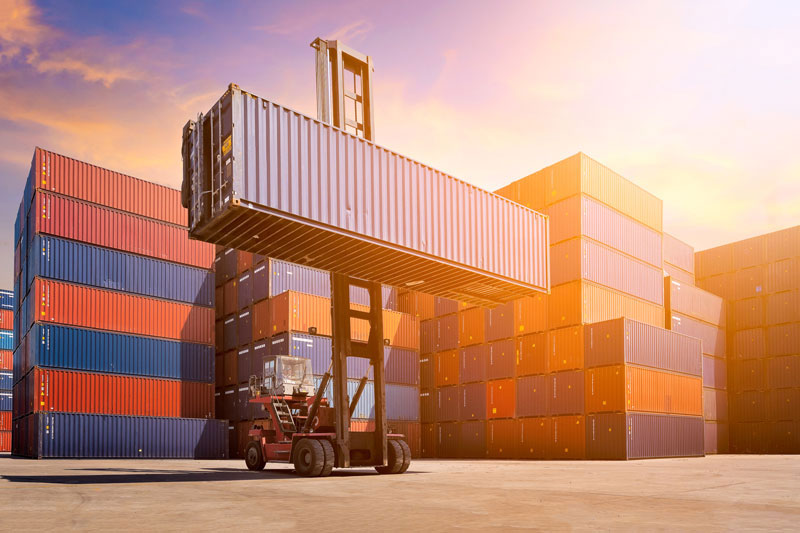
Just like the Olympics or the World Cup, major U.S. ports seem to face strikes every few years. The latest disruption began on October 1, 2024, involving significant actions across key ports, including those on the East Coast and in California. While there are various reasons behind these slowdowns, stoppages, and strikes there is a central issue that both labor unions and management have to grapple with: the pace of automation. Automation has become a significant point of contention in the port industry. An estimated 90% of all consumer goods or their raw materials pass through a port. This means that the impact of the decisions made here for the average person are acute. If we get this wrong either in the form of higher inflation or a strike.
So, what kind of automation are we talking about?
There are several key areas where automation is making its mark:
-
- Equipment Automation: This involves the use of automated vehicles and machinery such as Automated Guided Vehicles (AGVs), automated yard cranes, and automated straddle carriers. These machines can move containers around the port without a human operator, reducing the need for manual labor.
-
- Terminal Operations Systems: These systems manage the storage and movement of containers within the terminal. With advanced algorithms, they can optimize operations to a degree beyond human capability, decreasing the need for human oversight and decision-making.
-
- Gate Automation: Automated gates use technologies like optical character recognition (OCR) and radio frequency identification (RFID) to identify trucks and containers, reducing the need for human gate agents.
These advancements in automation have raised several concerns from labor unions- specifically around job losses and implicitly a lack of relevance for the union itself. Here’s how I would solve the logjam:
Step 1: Pay everyone off
What if we guarantee every longshoreman a $150k/yr until 2055 if their job is eliminated due to automation in exchange for a no-strike or work slowdown guarantee from the International Longshoremen’s Association (ILA) whose average wage is $50k-$200k depending on tenure. Assuming all 65,000 ILA members’ jobs were instantly automated (which is impossible), this program would cost approximately $10B per year. Realistically I’d put the cost at around $2.5B per year (16.7k jobs) starting a few years after the program was announced.
This annuity would provide security and financial stability for displaced workers, allowing them to retire comfortably, start a business, or supplement their income in new job roles. Such a program would also force port management and operators to consider these externalities when evaluating automation projects. It would ensure that the most beneficial projects are prioritized, while others are delayed until the economic math works out closer to 2055.
This could create a situation where workers are pushing for automation, while management is the one dragging its feet. Moreover, the ILA would benefit from a steady stream of revenue through union dues, guaranteeing financial stability for the organization for the next three decades and providing an opportunity for the ILA to pivot its business model.
Step 2: Help the ILA pivot its business model
While an automated port will still require human interaction for management and maintenance, the ILA should adapt its role within the industry. Instead of resisting automation, the ILA could become a standards organization that helps set rules and guidelines, testing, and the implementation of automation. They could be the ones certifying that equipment is designed, maintained, and functioning properly. By leveraging the experience of workers deeply involved in the automation process, the ILA can contribute to ensuring safe and efficient operations. This shift would allow the ILA to remain relevant and maintain a vital voice in the industry.
We can find a middle ground where automation can proceed without causing irreparable harm to workers and labor unions. It acknowledges the inevitability of automation while providing support and security for those affected. This approach allows for a smoother transition and ensures that the benefits of automation can be realized while maintaining a healthy balance between technological advancement and human employment.
Seems like a lot of money- is it worth it?
Let’s look at the estimated costs of the automation itself. Using the Middle Harbor redevelopment project at the Port of Long Beach, aimed at enhancing and modernizing the port, was estimated at about $1.49 billion in 2011. Using this as a proxy and extrapolating this benchmark to the top 10 ports in the US, we might be looking at an investment on the order of approximately $15 billion for the actual automation and call it $100B for the total initiative.
That’s a lot of money, but let’s look at the economic impact of the port industry. According to a report from the American Association of Port Authorities (AAPA), US coastal ports generated $5.4 trillion, or 26% of the US economy, in 2018. Several studies from the American Society of Civil Engineers suggest that each dollar spent on the US maritime transportation system generated $3.70-$5.20 in economic output.
A 5x return on $100B is bordering venture level returns. This is a good deal and we should take it. This sort of public private partnership makes a lot of sense and would benefit the country at large. Regardless of the approach, we need to figure out a way to help the union, workers, and management figure out a way forward because halting progress on automation with the expectation that the rest of the world will stand still and wait isn’t great policy.




